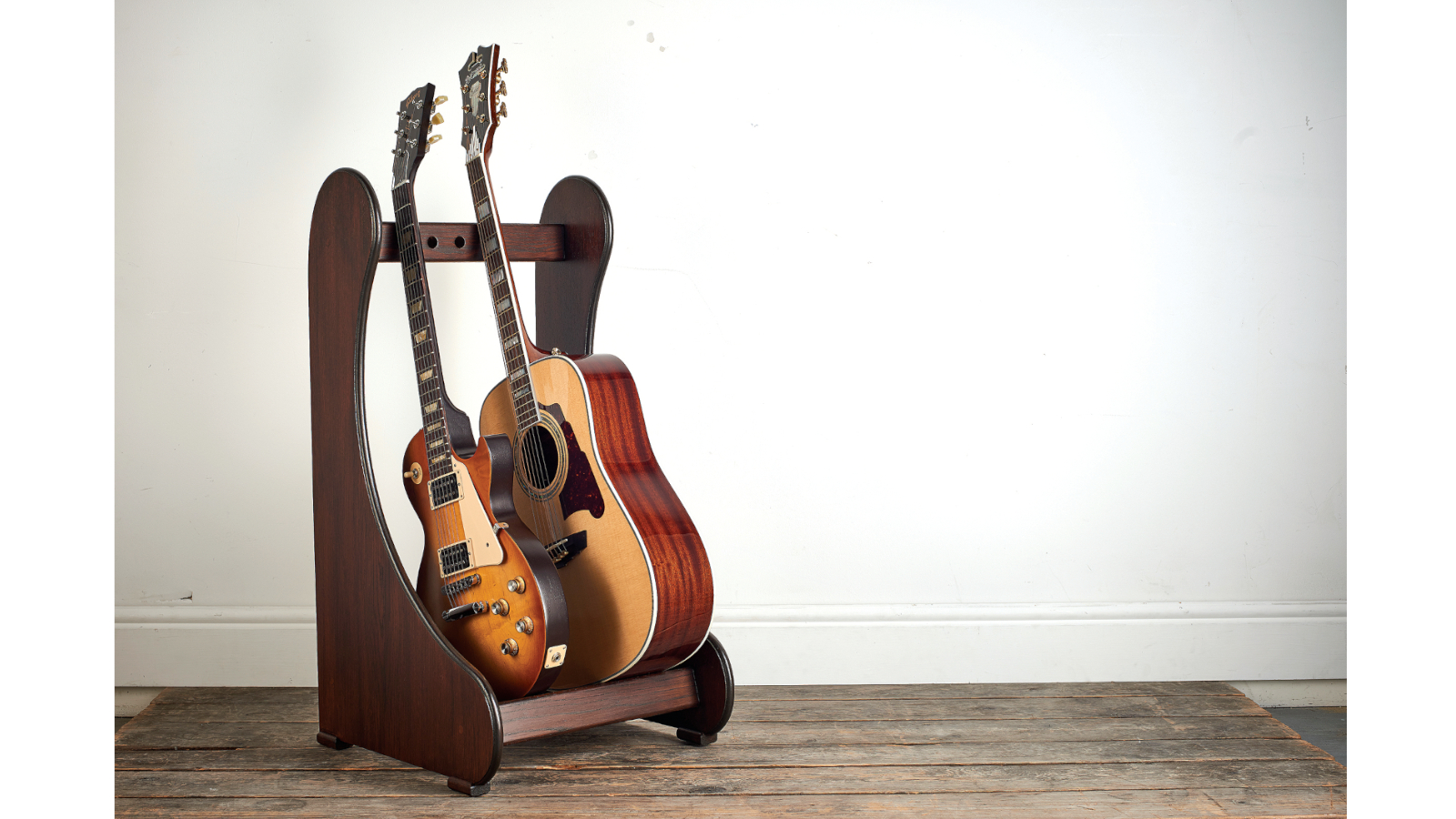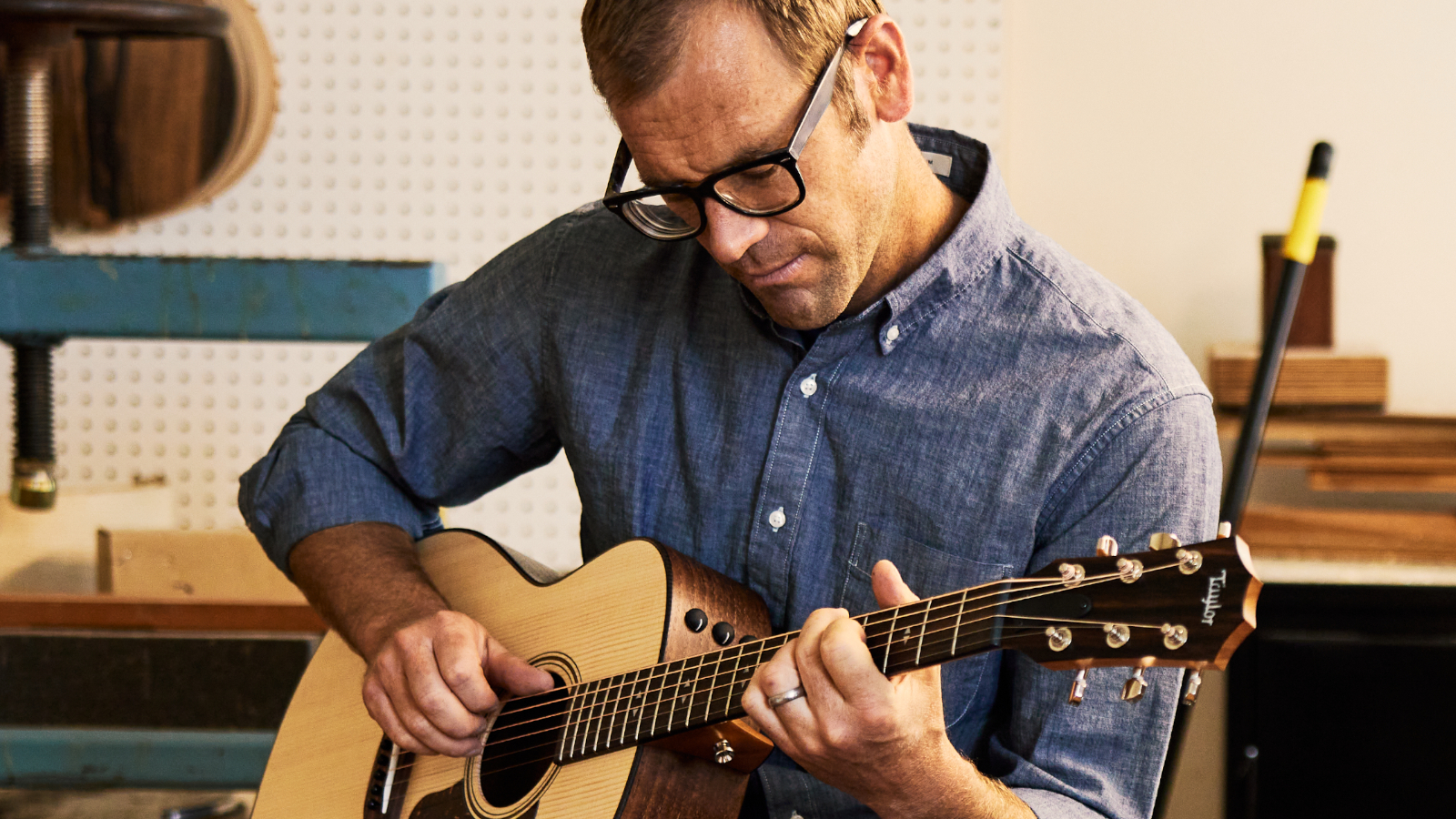Acoustic Tips for Electric Players
How to maximize that big hollow box

The guitar is rather schizophrenic, being essentially one instrument with two polar opposite personalities.
Acoustic was the only option for eons, but by the rock and roll era the script had flipped and electric instruments attracted different kinds of players.
Manufacturers such as Taylor built their brand names creating acoustics that appealed to the electric base.
Even the most die-hard electric guitar aficionados often own an acoustic, even if it just hangs around the house, and most acoustics are more playable than the old war horses of yore.
By its nature, the acoustic beast is a bit more to manage under the fingers, and the world of acoustic electronics is still alien to many.
Here are a few suggestions to make the most of any acoustic experience…

TAKE CARE
Modern acoustics are generally easier than electrics to tweak without a tech’s help, but also more susceptible to environmental changes.
Get The Pick Newsletter
All the latest guitar news, interviews, lessons, reviews, deals and more, direct to your inbox!
Neglect is the primary reason that house box gets hard to handle. Start by changing the acoustic guitar strings. If it gets left out a lot, go with a coated set that will feel fresher longer.
D’Addario’s XS Phosphor Bronze strings are ultra durable, and I’m looking forward to checking out the brand-new XS 80/20s.
Heavier strings deliver more tone but are harder to play
Heavier strings deliver more tone but are harder to play, so unless the body size is a dreadnought or larger, go with a light-gauge set. Electric cats may still want to use lights on a dreadnought for easier playability.
Many vintage acoustics didn’t have adjustable truss rods, but modern ones do, and a simple turn can make a ton of difference. Tighten it until the frets start to buzz a bit, and then loosen until the buzz is gone or acceptable. That’s the easiest action readily available.
Keep the instrument in a space that has the most consistent temperature and humidity, and away from windows. If you hang it, choose an inside wall rather than one that faces outside.
It’s also a great idea to place your acoustic back in its case or bag with a two-way humidification system such as D’Addario’s Humidipak every once in a while.
TRY A SMALLER/THINNER GUITAR
The voluptuous dreadnought was omnipresent during the ’60s folk-rock revival and remains ubiquitous.
When I was growing up in the 1980s, it seemed like the only option at most music stores, so that’s what we bought. Hey, Stephen Stills and David Gilmour played them. But when Eric Clapton played a Martin triple 0 on MTV Unplugged in 1992 and “Tears in Heaven” became a giant hit, more modern players got hip to smaller acoustics.
Some of those guitars, like Clapton’s, actually pre-dated larger guitars. Myriad new models have come along since, including every sort of hybrid acoustic-electric imaginable.
For traditional acoustics the main specification to understand is scale length
Even traditional-minded Martin is in on the game with its shredder-friendly SC deep cutaway models.
Takamine and Ibanez are well known for their thinline acoustics that look and feel a heck of lot like electrics.
For traditional acoustics the main specification to understand is scale length. Shorter scale length means closer frets and looser feel, which makes it easier to play stretch chords and bend strings like an electric guitar.
TAKE IT TO THE STAGE
The final issue that keeps electric stalwarts from bringing their acoustic goodness to the masses is amplification.
A player brings a new acoustic-electric guitar to the band’s show, plugs it into the house direct box, and often ends up with an uninspiring sound through a worn-out monitor.
Acoustic electronics is a huge discussion, but there are two simple moves to make forward progress.
First, get a dedicated acoustic amplifier to control your own sound onstage. Fender is doing great stuff with affordable acoustic amps.
The rule is, There are no rules
Even easier, simply get a magnetic sound-hole pickup for your acoustic guitar and run it through your electric rig. The acoustic guitar will now be essentially a hollowbody electric. It may not sound as truly “acoustic,” but if you’re not a purist, what’s the big deal?
Your pedals are at your disposal to manipulate the sound into something you dig, so have fun using your gadgets and gizmos. In fact, there’s no law against trying the piezo signal through a tube amp. A lot of them sound shoddy, but some can actually sound pretty good.
In his recent Frets interview, Jack Johnson reveals that his main sound onstage is the piezo signal from his Cole Clark acoustic into a Fender Twin.
The rule is, There are no rules. Do whatever makes the acoustic experience electrifying to you.
Jimmy Leslie has been Frets editor since 2016. See many Guitar Player- and Frets-related videos on his YouTube channel.
Jimmy Leslie has been Frets editor since 2016. See many Guitar Player- and Frets-related videos on his YouTube channel, and learn about his acoustic/electric rock group at spirithustler.com.
“Write for five minutes a day. I mean, who can’t manage that?” Mike Stern's top five guitar tips include one simple fix to help you develop your personal guitar style
"It’s like you’re making a statement. And you never know where it’ll lead." Pete Thorn shares the tip that convinced Joe Satriani he was the right guitarist for the SatchVai Band









